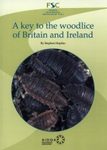About this book
Terrestrial isopods or woodlice (Crustacea, Oniscidea) represent the largest suborder of Isopoda and are the only group of crustaceans fully adapted to live on land. Up to date, over 3,700 species are known but many more are expected to be discovered as soon as many areas, especially in the tropics but also in temperate regions, have been properly investigated. Woodlice occur in almost any kind of terrestrial habitat, from the seashore to high in the mountains. They mainly occur in humid environments but some have adapted to very dry habitats, such as sub-deserts and even deserts. Woodlice are decomposers and represent one of the major components of soil fauna. Due to their limited distribution and strict ecological needs, they are excellent biogeographical and ecological indicators.
This special issue of ZooKeys includes a collection of 14 papers presented at the 9th International Symposium on Terrestrial Isopod Biology, which was held at Poitiers, France, from 26 to 30 June, 2014. Over 70 participants from 15 countries discussed the latest achievements in systematics, biogeography, morphology, physiology, evolutionary biology, ecology and ecotoxicology of terrestrial isopods. The symposium and the present volume are dedicated to the memory of Prof. Michael R. Warburg, Haifa, for his great contribution to the knowledge of terrestrial isopod biology.
Contents
1 In commemoration of Prof. M.R. Warburg and of his contribution to terrestrial Isopod biology (31 May 1931, Berlin–9 February 2014, Haifa)
Elisabeth Hornung
13 Patterns of taxonomic diversity among terrestrial isopods
Spyros Sfenthourakis, Stefano Taiti
27 The terrestrial Isopoda (Crustacea, Oniscidea) of Rapa Nui (Easter Island), with descriptions of two new species
Stefano Taiti, J. Judson Wynne
51 First record and redescription of the terrestrial isopod Hemilepistoides messerianus Borutzky, 1945 (Isopoda, Oniscidea) from Iran
Ghasem M. Kashani
59 The agnarid terrestrial isopods (Isopoda, Oniscidea, Agnaridae) of the province of Qazvin, Iran, with a description of a new species
Behjat Eshaghi, Bahram H. Kiabi, Ghasem M. Kashani
67 Does temperature and oxygen affect duration of intramarsupial development and juvenile growth in the terrestrial isopod Porcellio scaber (Crustacea, Malacostraca)?
Terézia Horváthová, Andrzej Antol, Marcin Czarnoleski, Paulina Kramarz, Ulf Bauchinger, Anna Maria Labecka, Jan Kozlowski
81 Histological studies on the marsupium of two terrestrial isopods (Crustacea, Isopoda, Oniscidea)
Diána Csonka, Katalin Halasy, Elisabeth Hornung
93 Formation of the hindgut cuticular lining during embryonic development of Porcellio scaber (Crustacea, Isopoda)
Polona Mrak, Urban Bogataj, Jasna Štrus, Nada Žnidaršic
111 Spectroscopic parameters of the cuticle and ethanol extracts of the fluorescent cave isopod Mesoniscus graniger (Isopoda, Oniscidea)
Andrei Giurginca, Vladimír Šustr, Karel Tajovský, Maria Giurginca, Iulia Matei
127 Demography of some non-native isopods (Crustacea, Isopoda, Oniscidea) in a Mid-Atlantic forest, USA
Elisabeth Hornung, Katalin Szlavecz, Miklós Dombos
145 Effects of microclimate on behavioural and life history traits of terrestrial isopods: implications for responses to climate change
Bernice Dixie, Hollie White, Mark Hassall
159 Personality affects defensive behaviour of Porcellio scaber (Isopoda, Oniscidea)
Ivan Hadrián Tuf, Lucie Drábková, Jan Šipoš
173 NEIGHBOUR-IN: Image processing software for spatial analysis of animal grouping
Yves Caubet, Freddie-Jeanne Richard
191 A fast GNU method to draw accurate scientific illustrations for taxonomy
Giuseppe Montesanto
Customer Reviews















































![Flore du Cameroun, Volume 45 [English]](http://mediacdn.nhbs.com/jackets/jackets_resizer_medium/25/258936.jpg?height=150&width=101)


